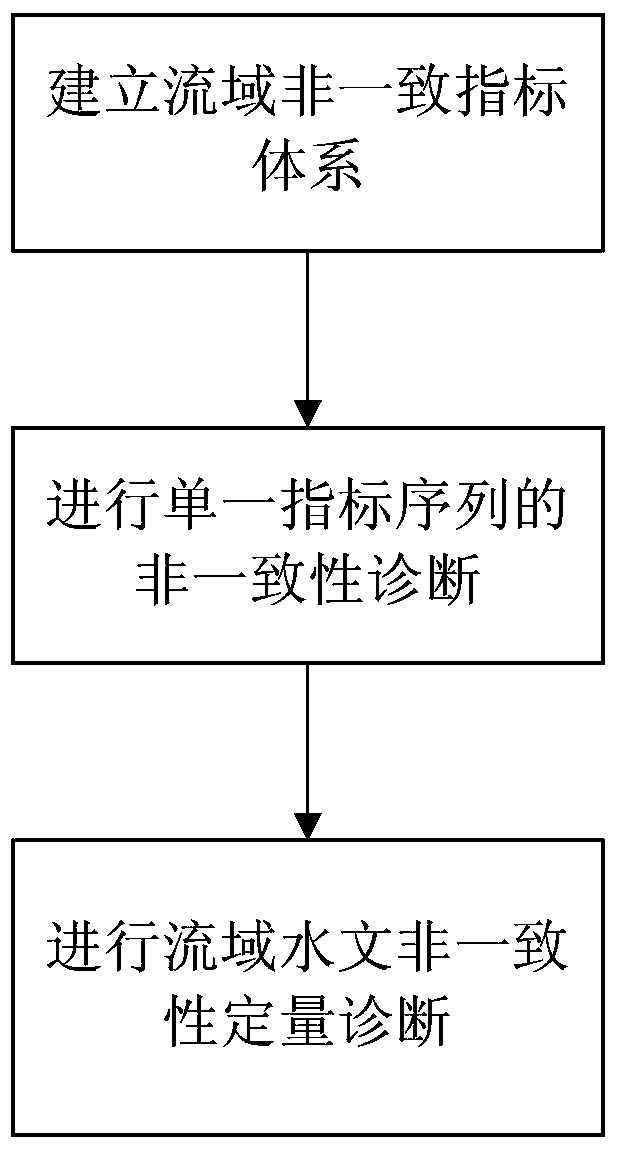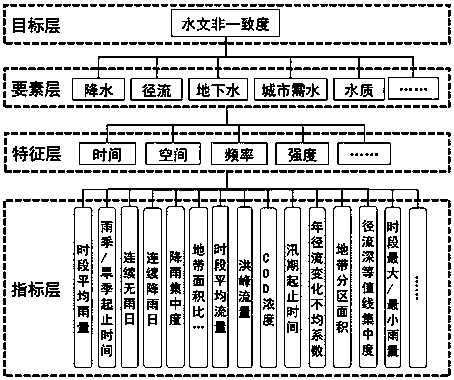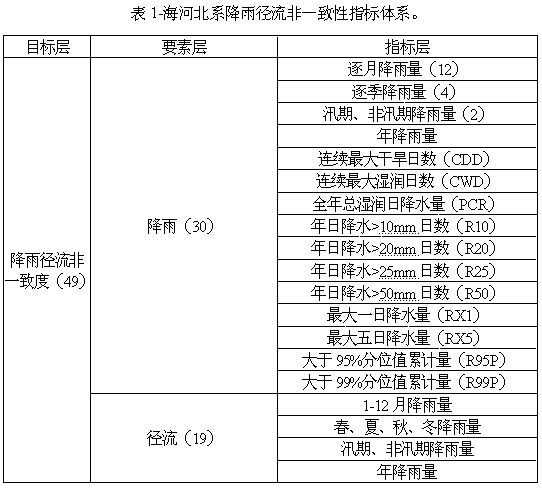A watershed-scale hydrological inconsistency diagnosis method
A diagnostic method, a consistent technology, applied in instrumentation, complex mathematical operations, climate change adaptation, etc., and can solve problems such as one-sided, non-negligible, unreal, etc.
- Summary
- Abstract
- Description
- Claims
- Application Information
AI Technical Summary
Problems solved by technology
Method used
Image
Examples
Embodiment 1
[0033] This embodiment is a method for diagnosing hydrological inconsistency at the basin scale, and the steps of the method are as follows:
[0034] Steps for establishing a watershed non-consistent index system: used to screen out index sequences representing the development characteristics of various hydrological processes, and classify and combine them according to the level of index-element-target. The index series can extract time series hydrological indicators. Aiming at the hydrological characteristics of the watershed and the aspects that need to be considered in diagnosis, and considering the availability of data sources, select representative indicators of important development characteristics, and classify and combine them according to the level of indicators-elements-targets. The indicators here can be any hydrological indicators that can extract time series. The characteristics include time, space, frequency, intensity, etc., and the elements include precipitatio...
Embodiment 2
[0063] This embodiment is an improvement of the first embodiment, and it is a refinement of the steps of the first embodiment on establishing the watershed inconsistency index system. The step of establishing the non-consistent indicator system of the river basin described in this embodiment includes the following sub-steps:
[0064] Select the diagnostic object. First, select diagnostic objects according to the needs. These diagnostic objects should be elements that can be recorded through time series. Effects, such as rainfall, runoff, groundwater, water quality, urban water demand, etc.
[0065] Determine diagnostic features. The characteristics to be diagnosed are determined according to the diagnosis object, and the diagnosis characteristics are some continuously changing parameters and the like. Precipitation and runoff, as hydrological variables, have time and space characteristics, and in the process of human utilization of water resources, they are given characteri...
Embodiment 3
[0069] This embodiment is an improvement of the second embodiment, and is a refinement of the index system of the second embodiment. The indicator system described in this embodiment classifies and combines the indicators according to the tree structure of target layer-element layer-index layer, such as figure 2 shown.
[0070] The above-mentioned "establishing a regional non-consistent index system" includes from top to bottom: one goal—inconsistency degree; the element layer can be multiple elements such as rainfall, runoff, water quality, urban water demand, ecology, etc.; the index layer includes multiple elements Indicators, such as the average rainfall in time period, consecutive rainless days, peak flow, runoff frequency, maximum rainfall in time period, etc.
PUM
 Login to View More
Login to View More Abstract
Description
Claims
Application Information
 Login to View More
Login to View More - R&D
- Intellectual Property
- Life Sciences
- Materials
- Tech Scout
- Unparalleled Data Quality
- Higher Quality Content
- 60% Fewer Hallucinations
Browse by: Latest US Patents, China's latest patents, Technical Efficacy Thesaurus, Application Domain, Technology Topic, Popular Technical Reports.
© 2025 PatSnap. All rights reserved.Legal|Privacy policy|Modern Slavery Act Transparency Statement|Sitemap|About US| Contact US: help@patsnap.com



